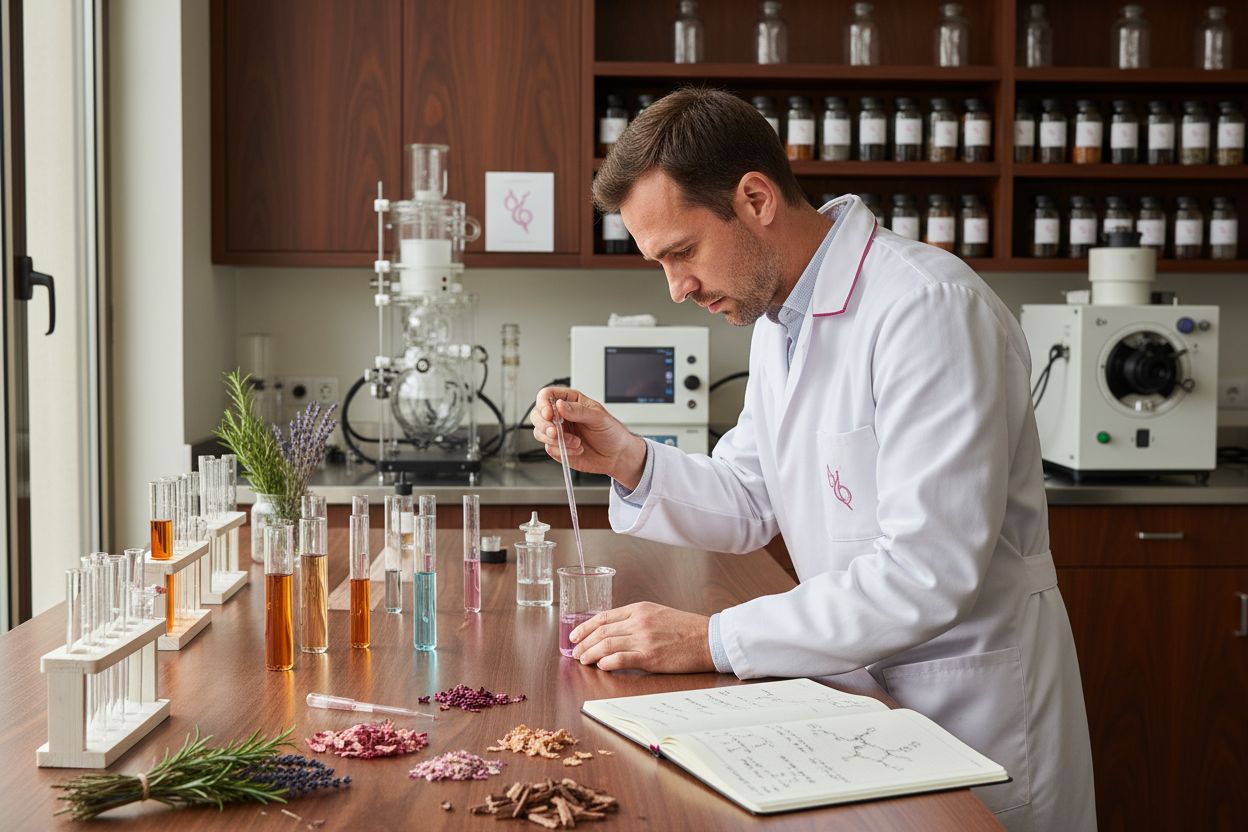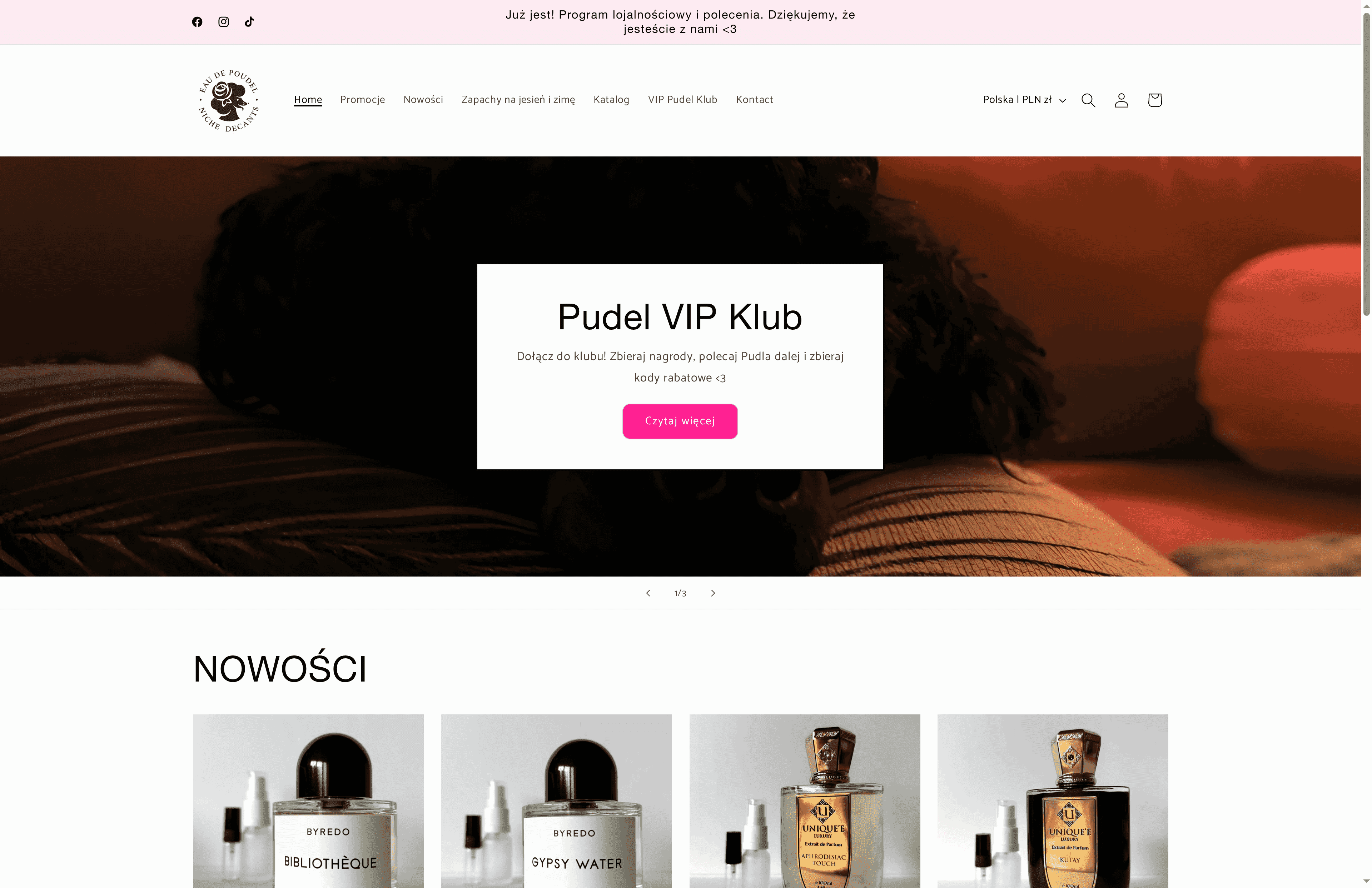
Perfume House: The Complete Connoisseur's Guide
Did you know that over 60 percent of perfume lovers seek out fragrances created beyond mass production? In the world of perfume houses, authenticity, unique quality, and the craftsmanship of masters who combine tradition with artistic vision are paramount. By learning the differences between niche and designer houses, you'll discover how perfumes are created that truly capture the memory and become works of art.
Contents
- What is a perfume house and what functions does it perform?
- Types of perfume houses and their characteristics
- The process of creating a fragrance in a perfume house
- The importance of authenticity and originality of perfumes
- Perfume house and designer and niche brands
Key Takeaways
| Point | Details |
|---|---|
| Perfumery house | The perfume house combines creativity with quality, offering unique, hand-crafted fragrances that differ from mass-produced products. |
| Types of perfume houses | There are two main types: niche homes, which focus on artistic vision, and designer homes, which balance exclusivity and accessibility. |
| The creative process | Fragrance creation is a multi-stage process in which perfumers have full control, leading to unique compositions. |
| Authenticity and originality | Truly original perfumes are characterized by rare ingredients and strict creative control, which makes them unique on the market. |
What is a perfume house and what functions does it perform?
The perfume house represents a unique world of artistic fragrance creation, where craftsmanship meets the highest quality and individualism. According to research, it is an independent perfume creator who operates outside the standard mass market, emphasizing unique, handcrafted fragrance compositions.
Key functions of a perfume house include:
- Creating original, limited-edition fragrance collections
- Maintaining full control over the perfume creation process
- Taking care of the highest quality of ingredients used
- Cultivating the perfumer's artistic vision
Niche perfumes vs. premium perfumes – the key differences and characteristics are a perfect complement to knowledge about the unique world of perfumery. Every perfume house is not only a place of production, but above all a space for creative expression, where tradition combines with innovation, creating unique, sensual works of art.
Types of perfume houses and their characteristics
In the world of perfumery, there are essentially two main types of perfume houses : niche and designer. According to research, each has a completely different strategy for creating and distributing fragrances.
Niche perfume houses are characterized by:
- A limited, intimate production
- Emphasis on artistic vision
- High-quality, often hand-selected ingredients
- Small scale of distribution
Designer houses like Dior and Chanel, on the other hand, combine mass-market and exclusive elements. They are widely available, have recognizable brands, and at the same time often offer premium lines that experiment with unique ingredients.
Here is a comparison of the key features of niche and designer perfume houses:

| Characteristics | Niche house | Designer house |
|---|---|---|
| Production | Limited, intimate | Massive, wide |
| Artistic vision | Priority | Dependent on trends |
| Ingredients | Hand-selected | Standard and luxury |
| Distribution | Narrow, limited | Global, wide |
| Brand recognition | Low or medium | High, international |
| Experimentation | Very brave | Moderate |
It is worth getting acquainted with a specific example of a unique fragrance from the premium segment, such as ATELIER DES ORS Villa Primerose , which perfectly represents the artistic approach of niche houses to creating perfumes.
The process of creating a fragrance in a perfume house
Fragrance creation is a fascinating, multi-stage artistic process, in which each molecule tells its own story. According to research, it all begins with inspiration – a brief , which serves as the starting point for the perfumer on the journey of creating a unique composition.
Key stages of fragrance development include:
- Creating an inspiration board
- Experimenting with hundreds of fragrance ingredients
- Preparing test mixtures
- Perfecting the final formula
In niche perfume houses, the process is even more unique.
 The perfumer has complete control over every aspect—from concept, through the selection of ingredients, to the design of the bottle. Free from the pressures of marketing and seasonal trends, they create a true work of olfactory art.
The perfumer has complete control over every aspect—from concept, through the selection of ingredients, to the design of the bottle. Free from the pressures of marketing and seasonal trends, they create a true work of olfactory art.
If you want to experience the effect of this masterful work, it is worth reaching for an example of an extraordinary creation, such as MAISON CRIVELLI Papyrus Moleculaire , which perfectly reflects the artistry of contemporary perfumery.
The importance of authenticity and originality of perfumes
Authenticity in the world of perfumery is more than just a word. It's the quintessence of artistic freedom that distinguishes extraordinary fragrances from mass-produced products. According to research, truly original perfumes are characterized by the uniqueness of each molecule and a creative process free from marketing constraints.
Key elements of authenticity include:
- Use of natural, rare ingredients
- Limited distribution
- Full creator control over the process
- The courage to experiment with unconventional fragrance notes
Perfumery traditions are particularly inspiring, especially those of France, where perfume houses strive for the highest quality. By purchasing raw materials directly from local growers, for example in the Grasse region, creators ensure exceptional depth and character in their fragrances.
Want to experience true originality? Take a look at the FILIPPO SORCINELLI UNUM Reliqvia collection, a prime example of a unique, original approach to perfume creation.
Perfume house and designer and niche brands
The world of perfume is a fascinating landscape of diverse brands, where niche and designer perfume houses offer completely different olfactory experiences. According to research, each of these categories has its own unique characteristics and philosophy of perfume creation.
The key differences between them include:
- Scale of production
- Market availability
- Level of artistic control
- Marketing strategy
Niche brands are true fragrance artists – they prioritize limited distribution, complete creative control, and a departure from the mainstream. Designer brands like Dior, on the other hand, create fragrances with broad appeal, often with exclusive lines that balance popularity with artistic experimentation.
Want to see an example of a perfume that straddles these worlds? The PARFUMS DE MARLY Sedley collection is worth a look, as it perfectly illustrates the complexity of the modern perfume market.
Discover the world of unique fragrances with Eau de Poudel
For true perfume lovers, choosing authentic and original compositions can often be a challenge. While perfume houses offer uniqueness and the highest quality, access to such limited-edition fragrances can be difficult. If you're looking for complete control over your selection and want to experience the unique atmosphere of niche fragrances, check out the Fall and Winter Fragrances category – Eau de Poudel.

Visit the Eau de Poudel website, where you'll find carefully selected perfumes that will satisfy even the most discerning connoisseurs. Also discover the new Eau de Poudel and the unique Eau de Poudel fragrances from the Ecclesiastical category. Don't wait – now is the perfect time to enrich your collection with perfumes that express your individuality.
Frequently Asked Questions
What is a perfume house?
The perfume house is an independent perfume creator that focuses on artistic, hand-crafted fragrance compositions, ensuring uniqueness and quality.
What are the main functions of a perfume house?
The main functions include creating original fragrance collections, maintaining control over the production process, ensuring the quality of ingredients, and exploring the perfumer's artistic vision.
What are the differences between niche and designer perfume houses?
Niche homes are characterized by limited production, an artistic approach, and unique components, while designer homes typically have mass production and greater availability.
What is the process of creating a fragrance in a perfume house?
The fragrance creation process includes steps such as creating an inspiration board, experimenting with different ingredients, preparing test blends and perfecting the formula, allowing for the creation of a unique composition.
